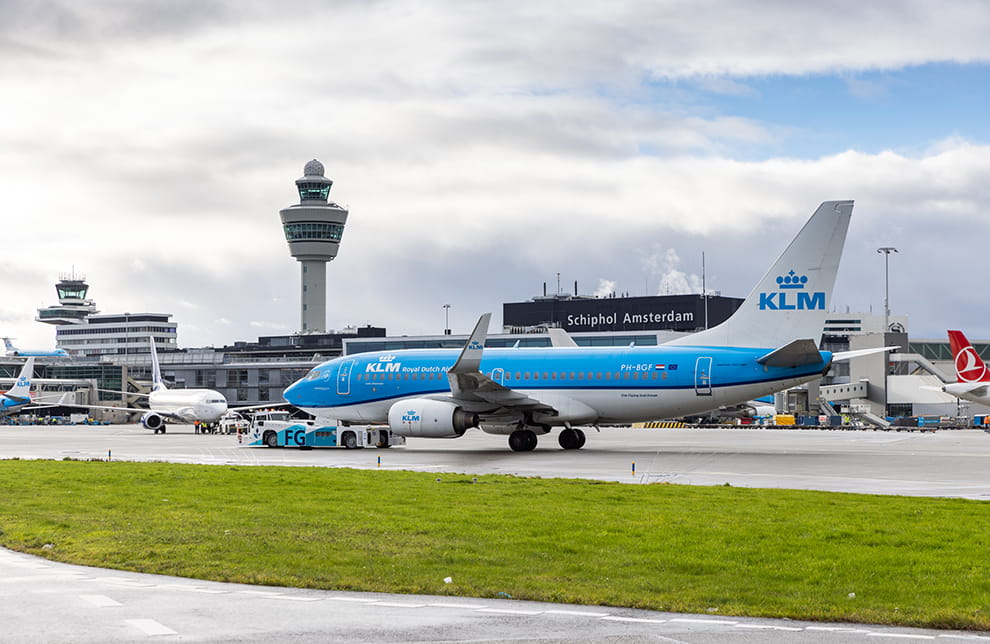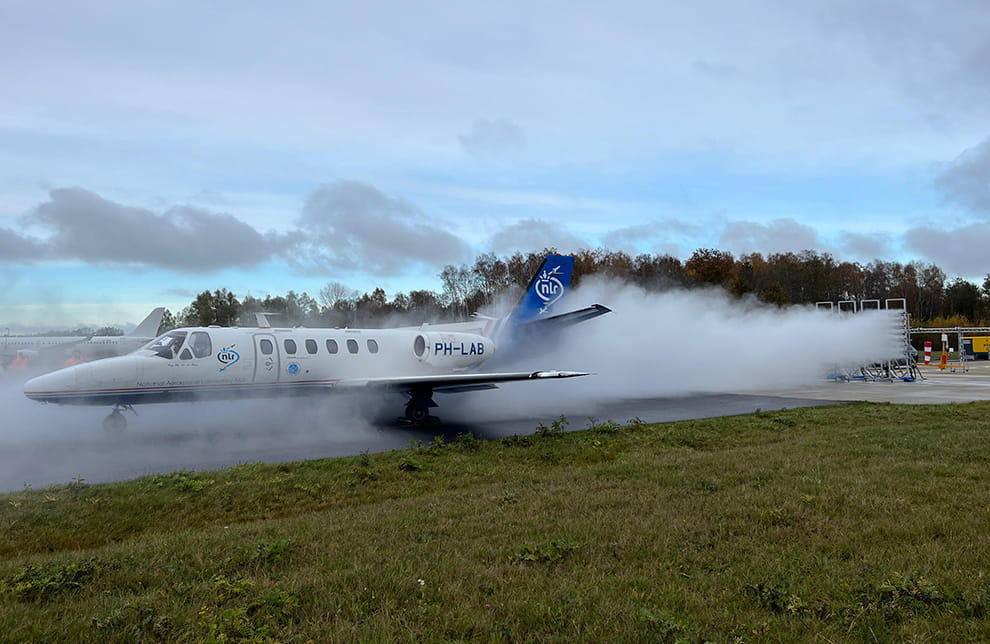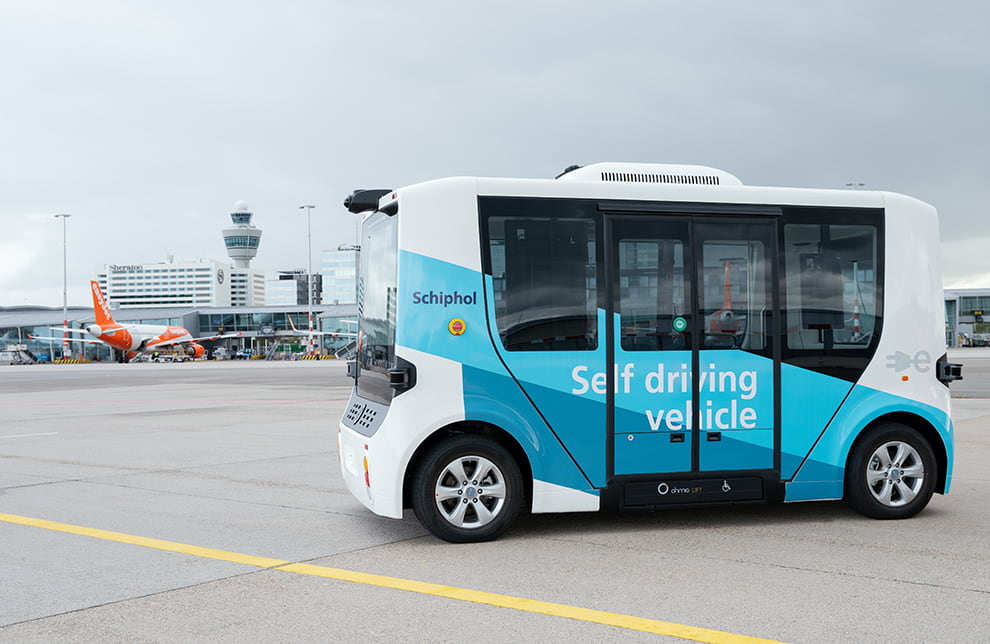Sustainable Taxiing

The ambition
We, the sustainable taxiing taskforce, realise aircraft ground movements where all avoidable emissions have been eliminated. In close collaboration with the aviation ecosystem, we meet our own sustainability ambitions and societal & political demands for the benefit of airlines and our local community – now and in the future.
First pilot successfully completed
Schiphol and a number of partners conducted a successful pilot study in 2020. During the pilot, aircraft were taken to and from the runways by the Taxibot. This special vehicle was designed by Smart Airport Systems, a sister company of the well-known supplier of ground handling equipment TLD. The vehicle – of which there are currently only ten in the world – is driven by a hybrid combination of electric and diesel engines. During taxiing, it uses 95% less fuel than aircraft engines.
Working towards our ambition
The pilot delivered successful results, and so a roadmap to make sustainable taxiing standard procedure at Schiphol was made. As a first step, Schiphol acquired two new Taxibots. These will be used in a follow-up trial. The trial phase will then transition into a standard procedure, with certain types of aircraft taxiing sustainably to and from the Polderbaan Runway.
Preparations to continue take up first small scale operations of Sustainable taxiing in 2024 already underway for this.
Sustainable taxiing as standard
Schiphol is striving for sustainable taxiing at the airport in 2030, together with Air Traffic Control the Netherlands (LVNL), KLM, Transavia, Corendon Dutch Airlines, TUIfly and ground handling companies dnata, Swissport, Viggo, KLM Ground Services and TaxiBot provider Smart Airport Systems. The Ministry of Infrastructure and Water Management is supporting the initiative. The tests are part of European initiatives within the framework of the ALBATROSS-consortium and its successor: HERON. These subsidy projects aim to make aviation more sustainable.
Read the previous blogs
-
Tap and go with your Digital Travel Credential!
Published on:Can you board and cross the border faster with a digital travel document? At the request of the EU, we are testing a DTC together with the government and KLM.

-
Test capturing ultrafine particles with droplets
Published on:We are working diligently to reduce the amount of ultrafine particles. A possibility is the use of water droplets to remove ultrafine particles from the air.

-
Autonomous Bus Initiative
Published on:Our ambition: operating the world's most sustainable and top-tier airports by 2050. With this in mind we're putting autonomous buses to the test on airside.
